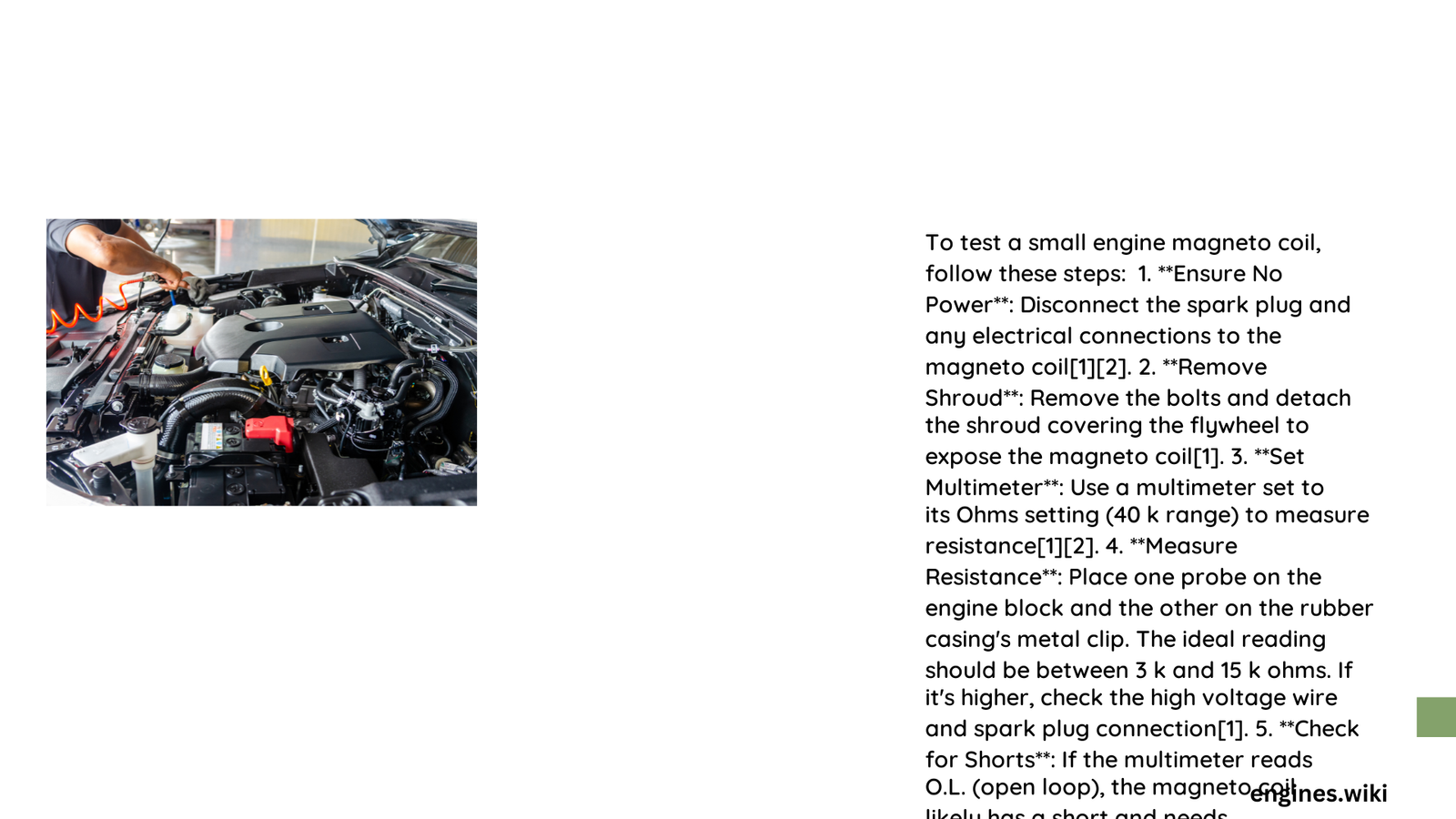Small engine magneto coil testing is a critical diagnostic procedure that helps mechanics and DIY enthusiasts identify ignition system problems. By systematically evaluating the coil’s resistance, spark generation, and electrical integrity, technicians can quickly determine whether a faulty coil is preventing engine performance, ensuring reliable operation of lawnmowers, generators, and other small power equipment.
What Tools Do You Need for Magneto Coil Testing?
Essential Equipment
- Multimeter (20k ohms range)
- Spark tester
- Screwdrivers
- Service manual
- Safety gloves
How to Perform Initial Spark Diagnostics?

Preliminary Spark Test Procedure
- Disconnect spark plug wire
- Connect spark tester to ignition cable
- Ground tester to cylinder head
- Rapidly spin flywheel (minimum 350 RPM)
- Observe spark generation
What Are Resistance Testing Techniques?
Resistance Measurement Approach
| Winding Type | Terminal Connection | Expected Resistance Range |
|---|---|---|
| Primary Winding | Base to Shut-off Wire | 2-18,000 ohms |
| Secondary Winding | High Tension Lead to Base | 2-18,000 ohms |
Key Testing Steps
- Set multimeter to 20k ohms range
- Verify manufacturer specifications
- Measure between specified terminals
- Compare readings to recommended values
Why Do Magneto Coils Fail?
Common Failure Mechanisms
- Thermal stress
- Moisture contamination
- Mechanical vibration
- Electrical overload
- Age-related degradation
How to Interpret Test Results?
Diagnostic Indicators
- Normal Coil: Consistent resistance within specified range
- Faulty Coil:
- Resistance outside manufacturer specifications
- No spark generation
- Intermittent electrical performance
What Are Replacement Considerations?
Cost and Time Factors
- Replacement coil: $20-$100
- Professional labor: $50-$200 per hour
- Typical replacement time: 30-120 minutes
Pro Tips for Accurate Testing
Advanced Diagnostic Techniques
- Always reference specific engine manual
- Clean connection points before testing
- Use calibrated testing equipment
- Perform multiple test iterations
- Consider environmental conditions
Safety Precautions
Critical Safety Guidelines
- Disconnect battery
- Work in well-ventilated area
- Use insulated tools
- Wear protective equipment
- Avoid testing near flammable materials
Maintenance Recommendations
Preventive Strategies
- Regular visual inspections
- Keep electrical connections clean
- Protect from moisture
- Monitor engine performance
- Replace preventatively after recommended hours
Troubleshooting Complex Issues
Advanced Problem Resolution
- Check ground wire connections
- Verify safety switch functionality
- Inspect wiring harness
- Test alternative components
- Consider professional diagnosis if uncertain
Final Diagnostic Workflow
Systematic Testing Process
- Perform initial spark test
- Measure resistance values
- Compare against specifications
- Evaluate additional symptoms
- Make repair/replacement decision
Note: Precise testing requires patience, methodical approach, and understanding of specific engine characteristics.
Conclusion
Mastering small engine magneto coil testing empowers technicians to diagnose and resolve ignition system problems efficiently. By following systematic procedures and understanding diagnostic techniques, you can maintain optimal engine performance.
